Stock Set Up: Difference between revisions
Lwinchester (talk | contribs) |
Lwinchester (talk | contribs) |
||
| Line 150: | Line 150: | ||
<center>[[Image:st-014.PNG ]]</center> | <center>[[Image:st-014.PNG | Stock Warehouse ]]</center> | ||
<br/> | <br/> | ||
=='''Unbonded Stock Locations Details'''== | =='''Unbonded Stock Locations Details'''== | ||
Revision as of 14:33, 24 August 2010
INTRODUCTION
This page describes the required screens to be used in setting up the information concerned with the stock to be stored in the warehouse. Other guides describe the set up of company, user, warehouse, owners etc.
This is a generic guide based on the version of the system at the time of writing.
It can also be used by clients to specify their specific data values to aid initial system set up as well as for future reference.
Note that fields marked ‘**’ are mandatory and are needed to ensure correct set up of the system.
OVERVIEW
The configuration dependency diagram below illustrates which configuration levels are contingent upon preceding configuration. The pre-requisites for setting up stock information are:
1. Product type
2. Product class
3. Unit of measure
The main stock information is input in a number of tab screens within the main screen. Note that it is necessary to input all mandatory fields on all tabs before a product can be used within the system.
Once stock information is available it is possible to define:
1. Substitute stock
2. Sales kit configuration
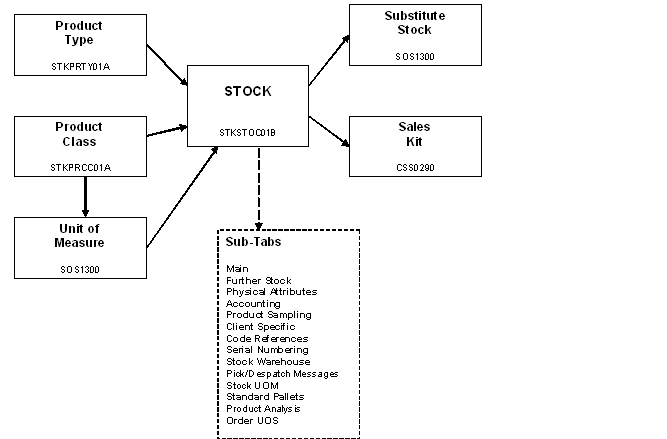
PRODUCT TYPE MAINTENANCE (STKPRTY01A)
Product type configuration is a pre-requisite to the configuration of products, given that product type is a mandatory field in the product configuration. Product types enable the grouping of stock, usually by physical classification. For example, frozen, chilled or ambient products may each be assigned a distinct product type
Split pick liste etc
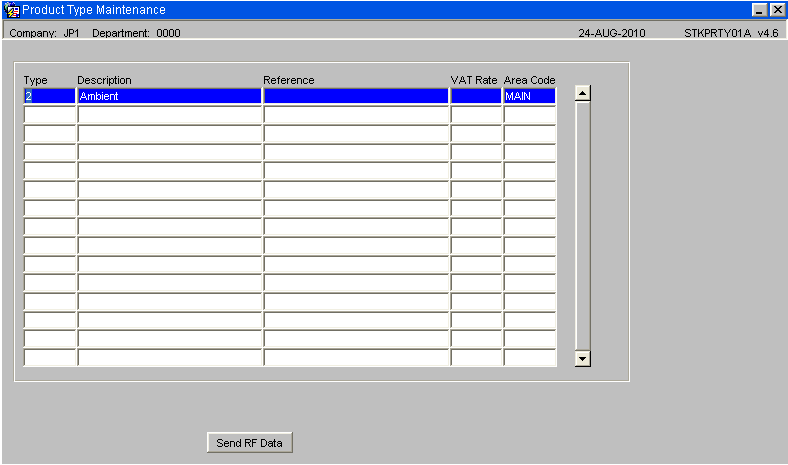
send to rf
PRODUCT CLASS MAINTENANCE
Product Range, Class, Category and Group combinations are created in order to segregate stock within the warehouse. They can also be used to distinguish one type of product from another. You can use these combinations to specify putaway routines and for stocktaking purposes. Note, although you see all four here, when you set them up you have to create the range first, go through the rest of the fields and save the record. When you come to create the class field, you have to enter the range you just created and then go through the same process. In this way, you can have multiple combinations of all four criteria.
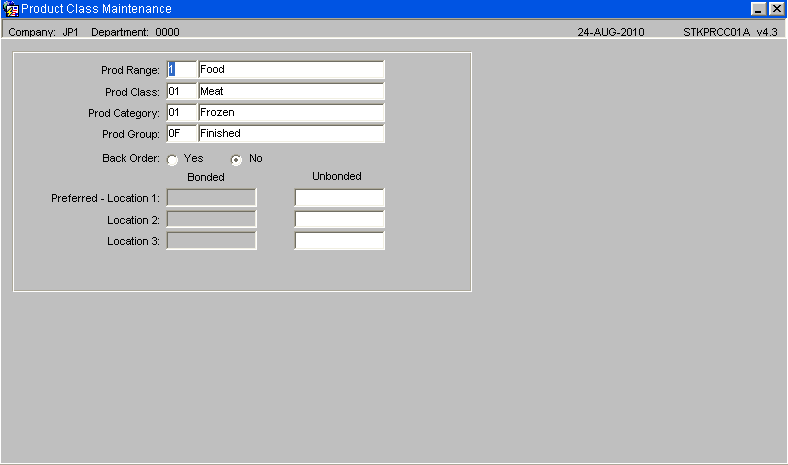
UNIT OF MEASURE MAINTENANCE (SOS1300)
Unit of measure maintenance, enables the configuration of warehouse storage medium for specific product groups, this level of configuration is a pre-requisite for the configuration of individual products, in that the UOMs configured against a product group will be applied to the stock codes that are assigned that product grouping.
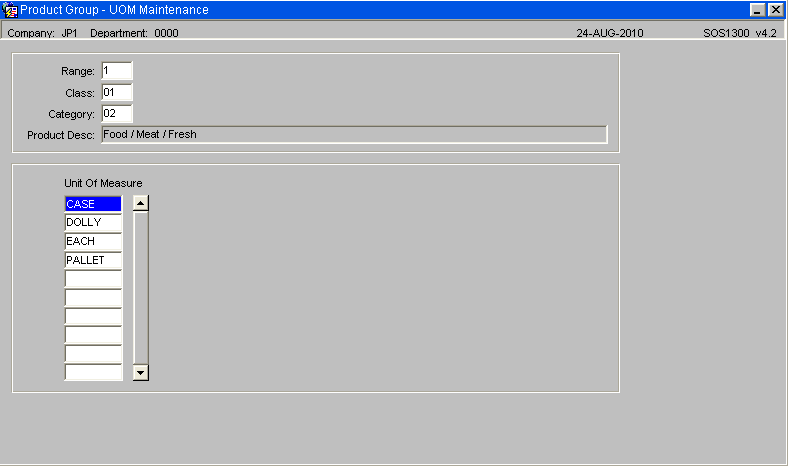
STOCK MAINTENANCE
This form and all the tabbed sub screens carry all the product level configuration settings.
Stock Maintenance – Main Tab
First group of general product details.
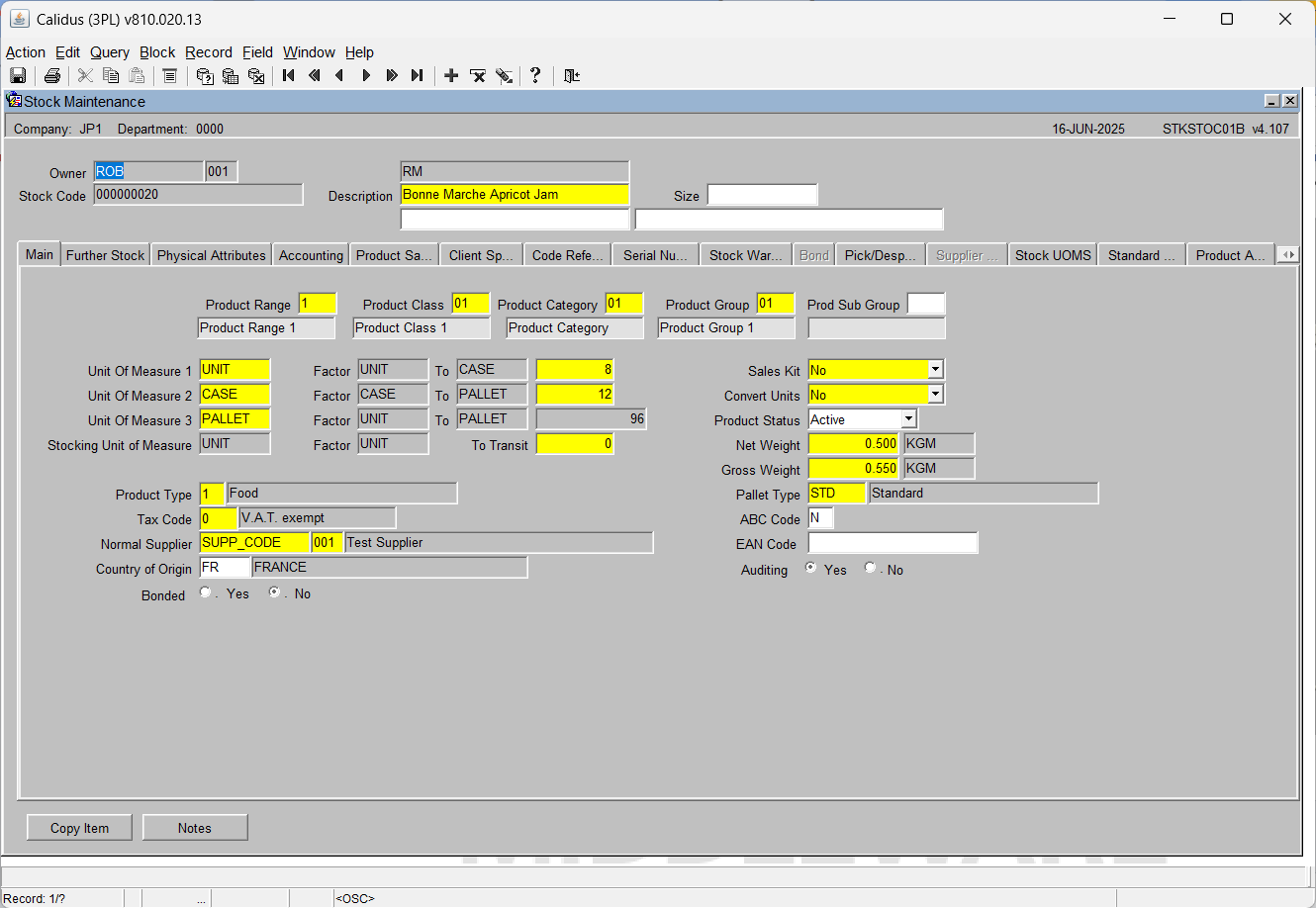
Stock Maintenance – Further Stock Tab
Second group of general product details.
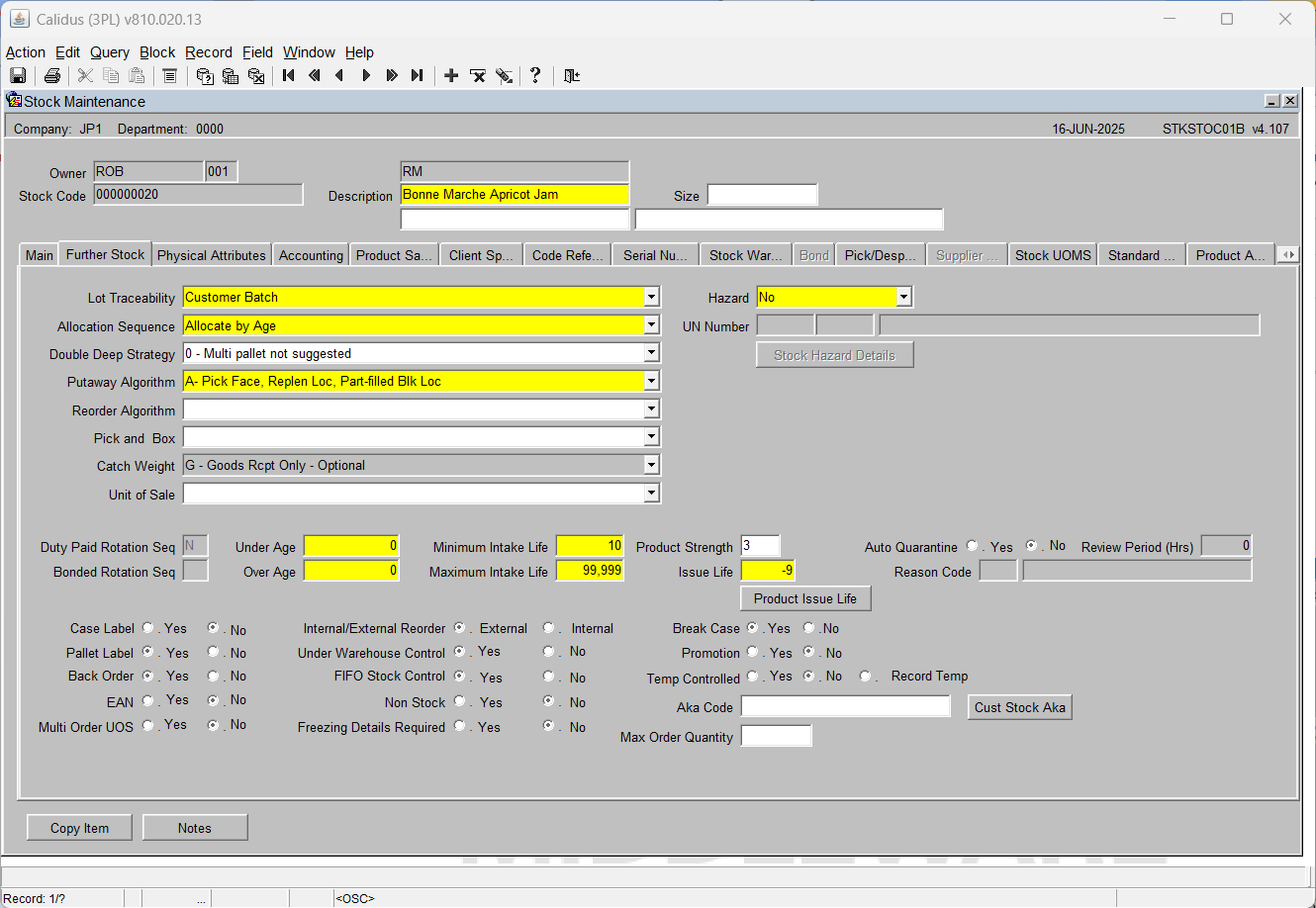
Stock Maintenance – Physical Attributes Tab
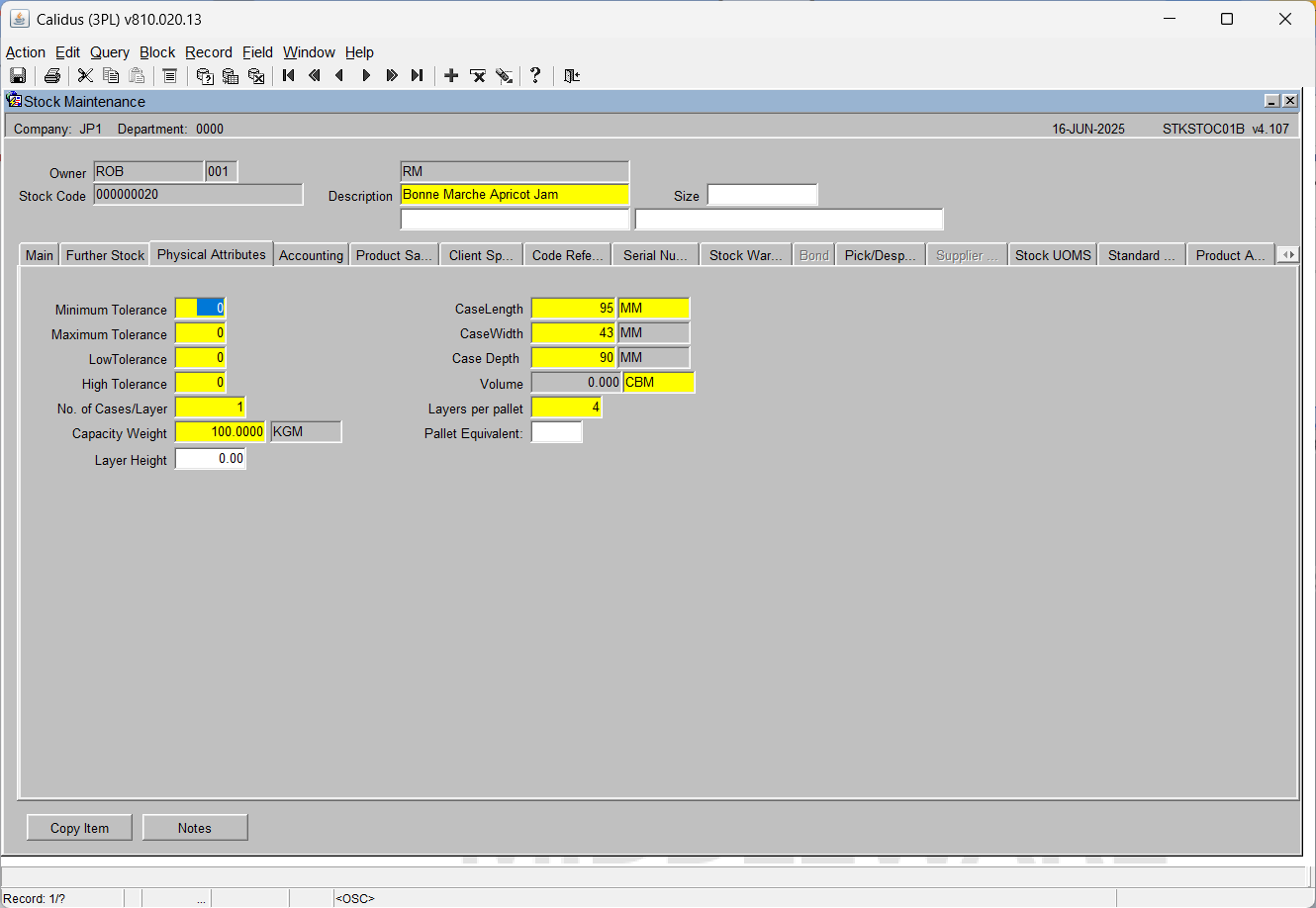
Stock Maintenance – Accounting Tab
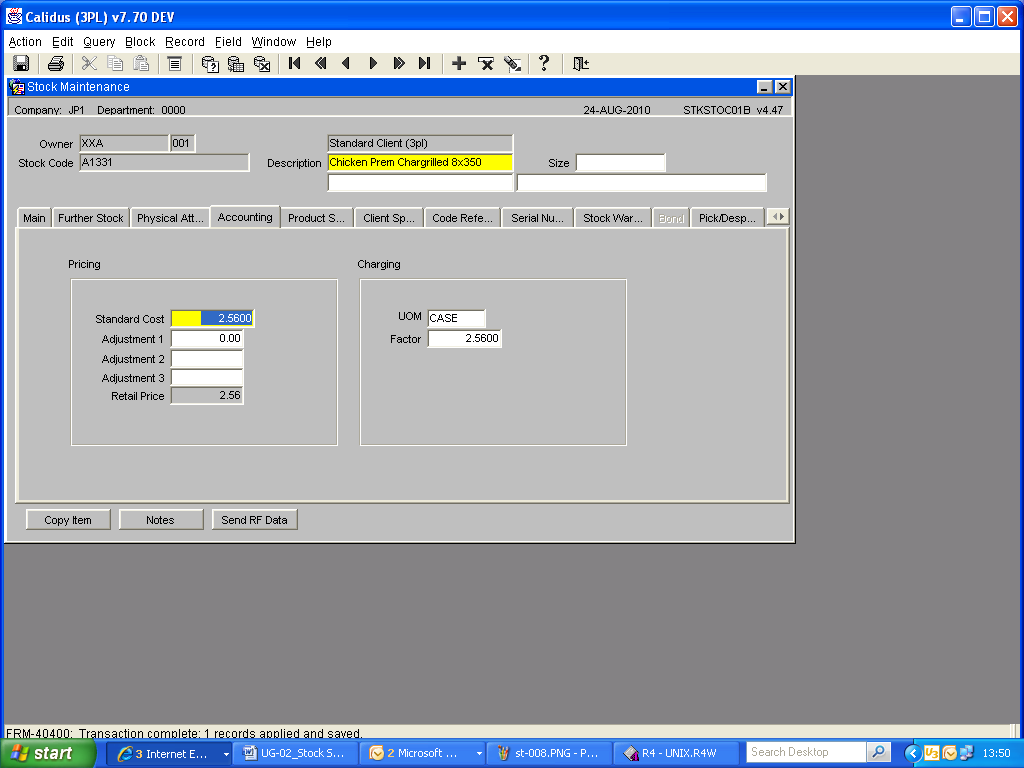
Stock Maintenance – Product Sampling Tab
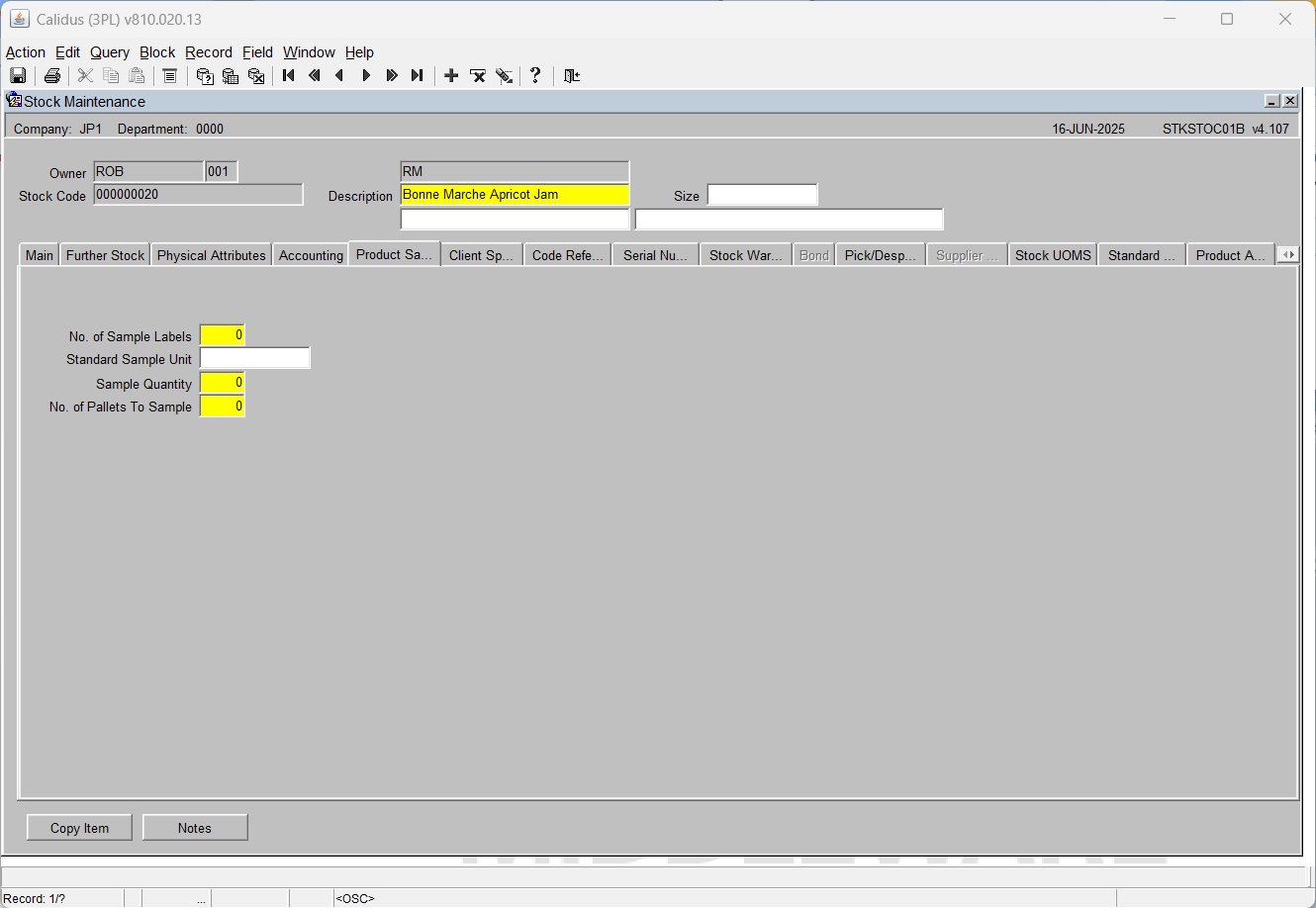
Stock Maintenance – Client Specific Tab
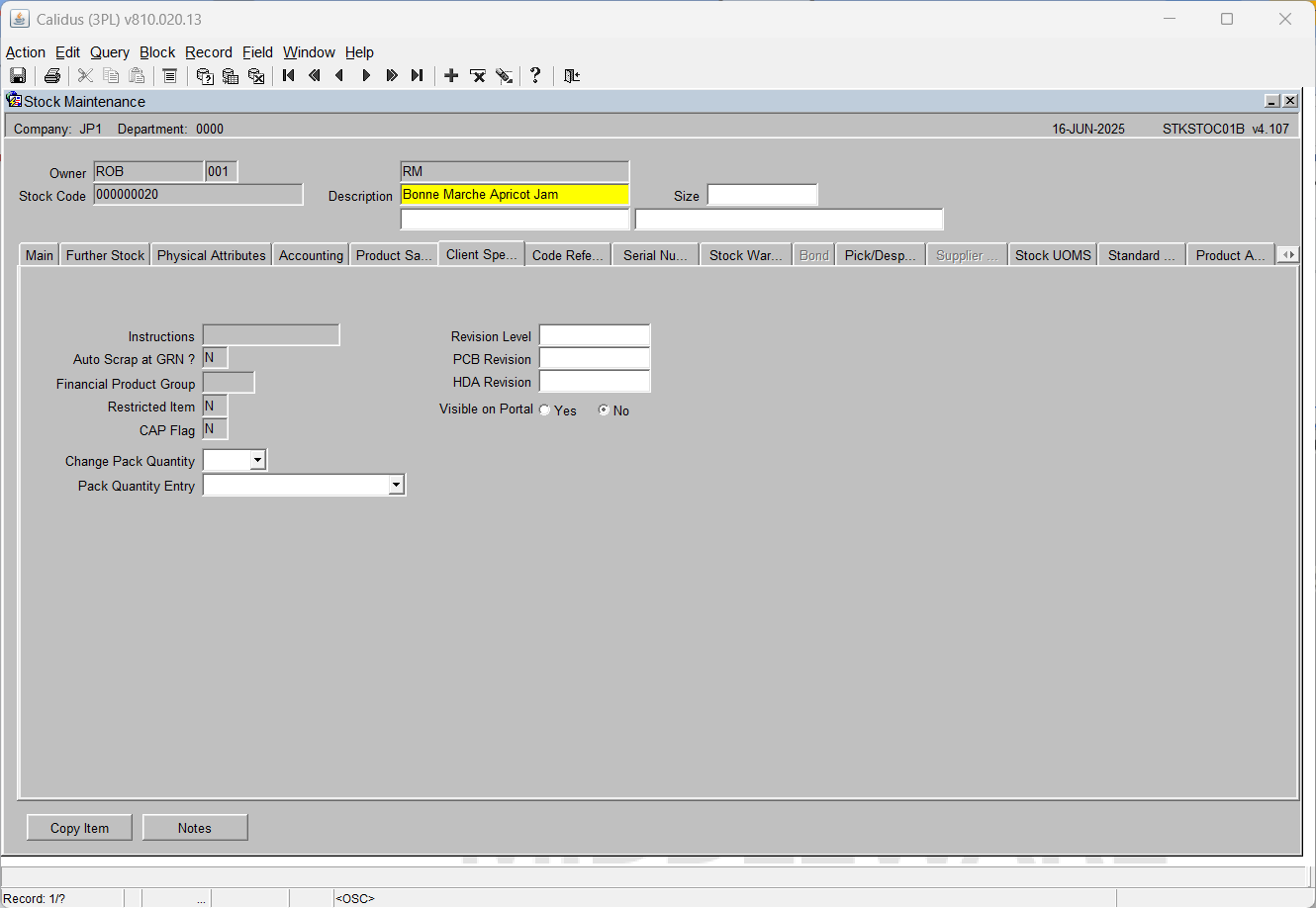
Stock Maintenance – Code References Tab
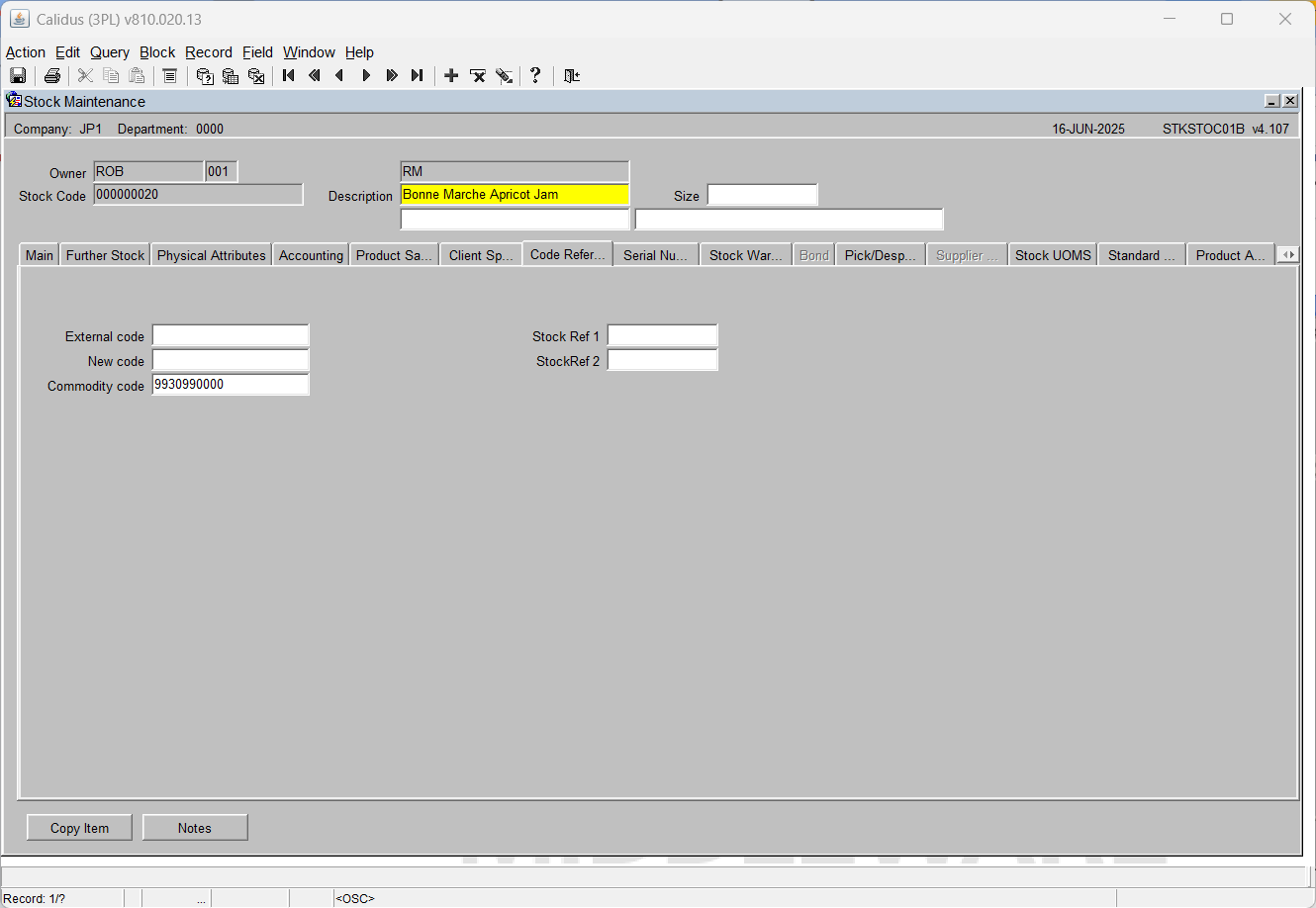
Stock Maintenance – Serial Numbering Tab
This tab screen enables the configuration of a product to enable the capture of serial number details at a carton level at either the inbound or outbound stages
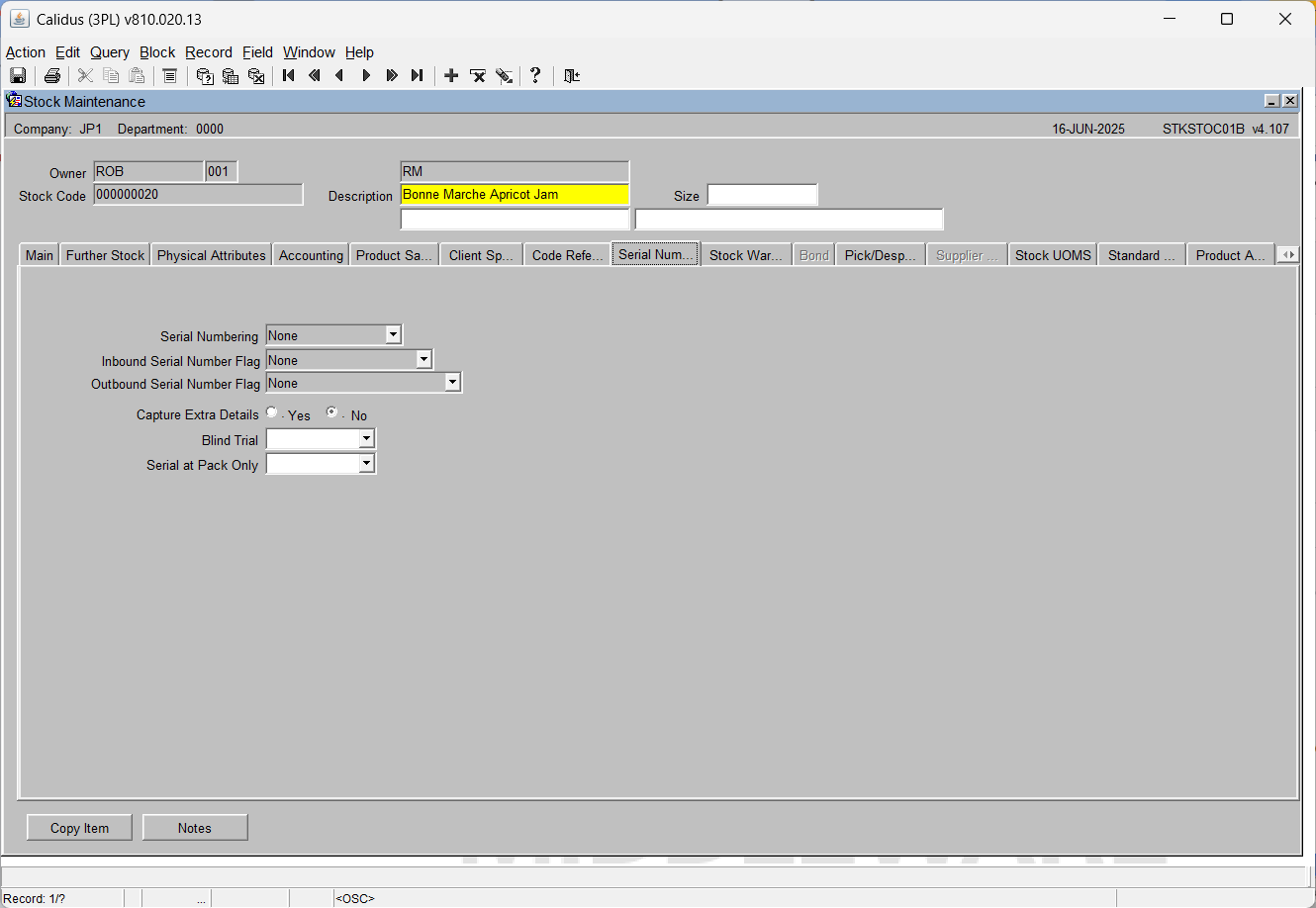
Stock Maintenance – Stock Warehouse Tab
This tab screen provides configuration control for a product’s warehouse level settings. Note that there can be multiple records for a given product in cases where the product is stored in multiple warehouses.
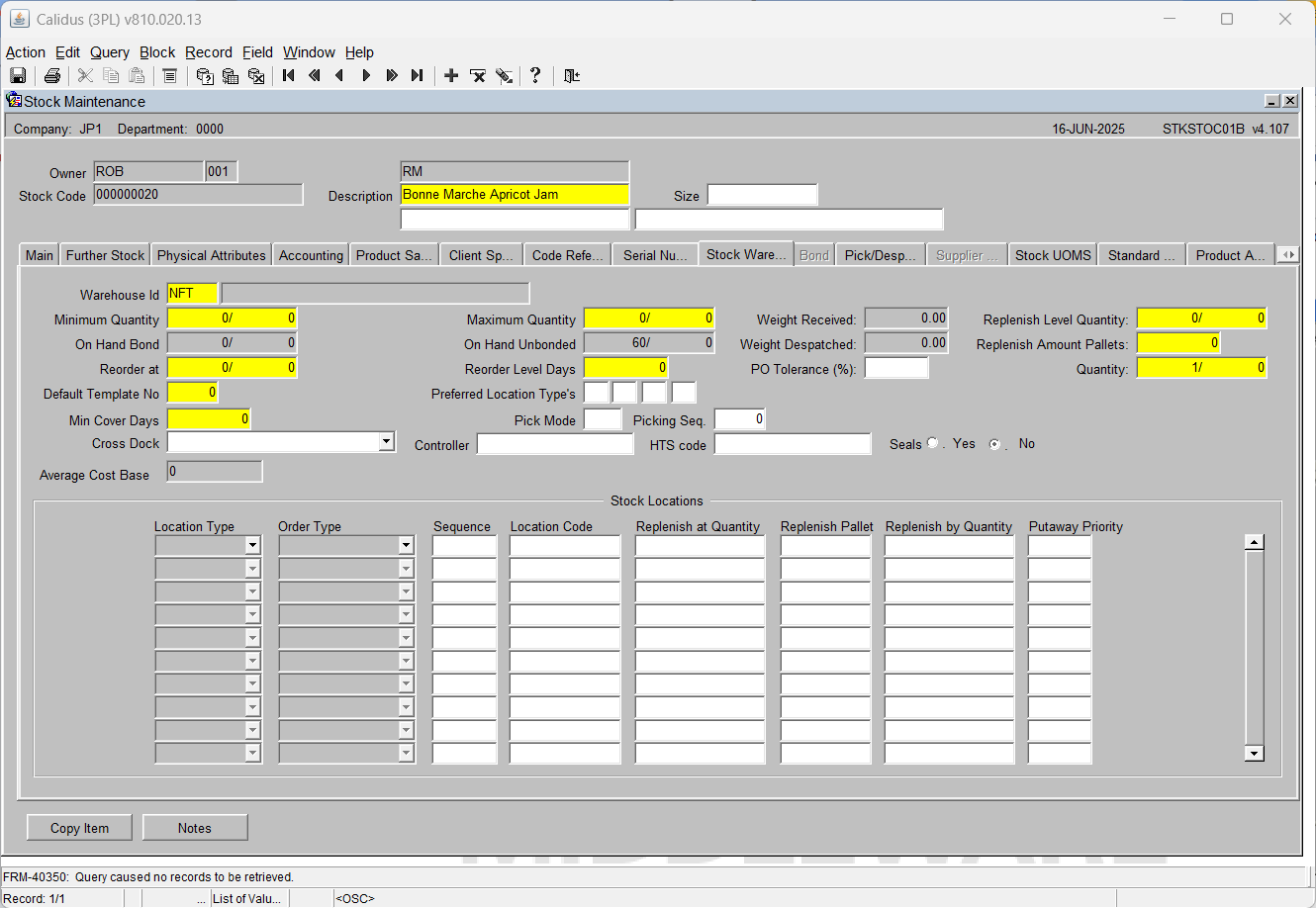
Unbonded Stock Locations Details
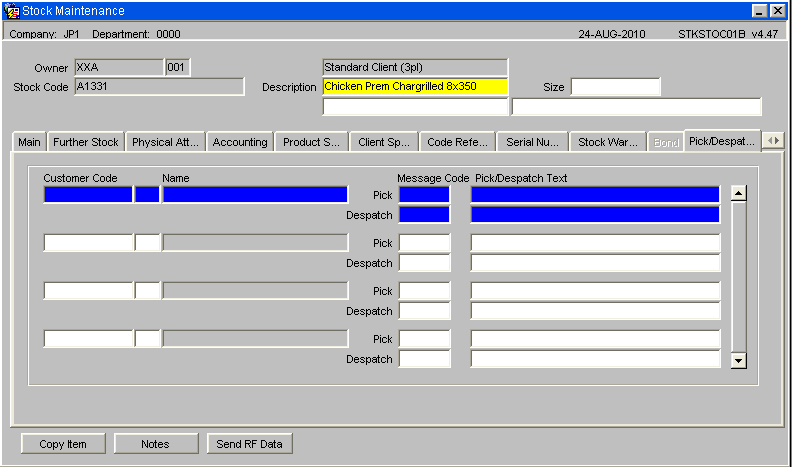
Stock Maintenance – Pick/Despatch Messages (Not Migrated)
This tab screen enables the configuration of product level message lines that can be configured for individual customers for reporting purposes, namely on despatch notes and pick lists.
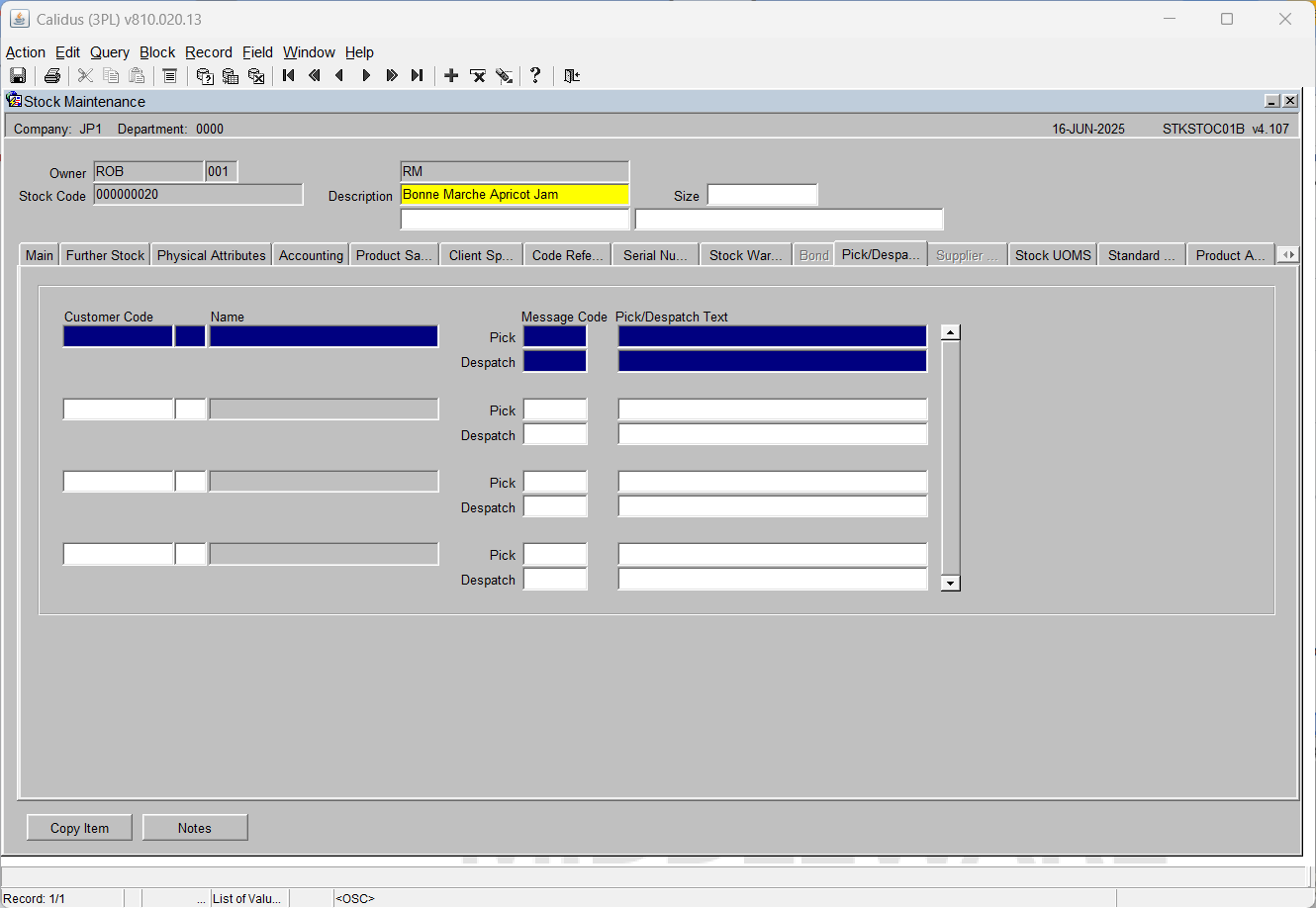
Stock Maintenance – Stock UOMS Tab (Not Migrated)

Stock Maintenance – Standard Pallets Tab
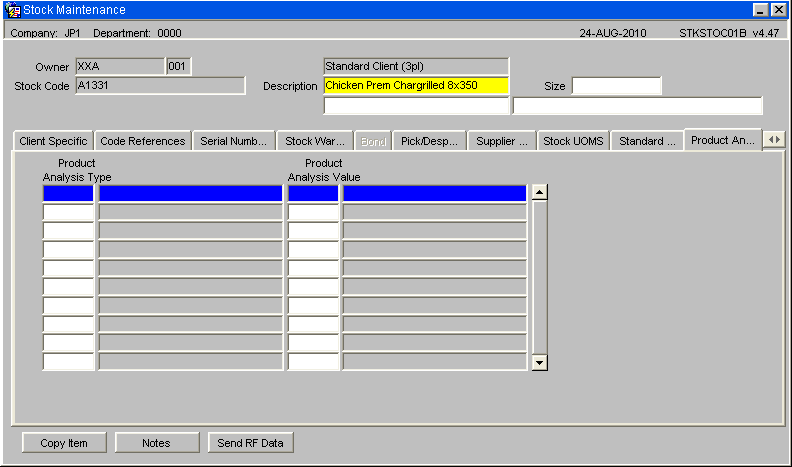
Stock Maintenance – Product Analysis Tab (Not Migrated)
This screen is used to assign analysis types to a particular product. Once assigned, this analysis type can be used to group products together and assign values to them.
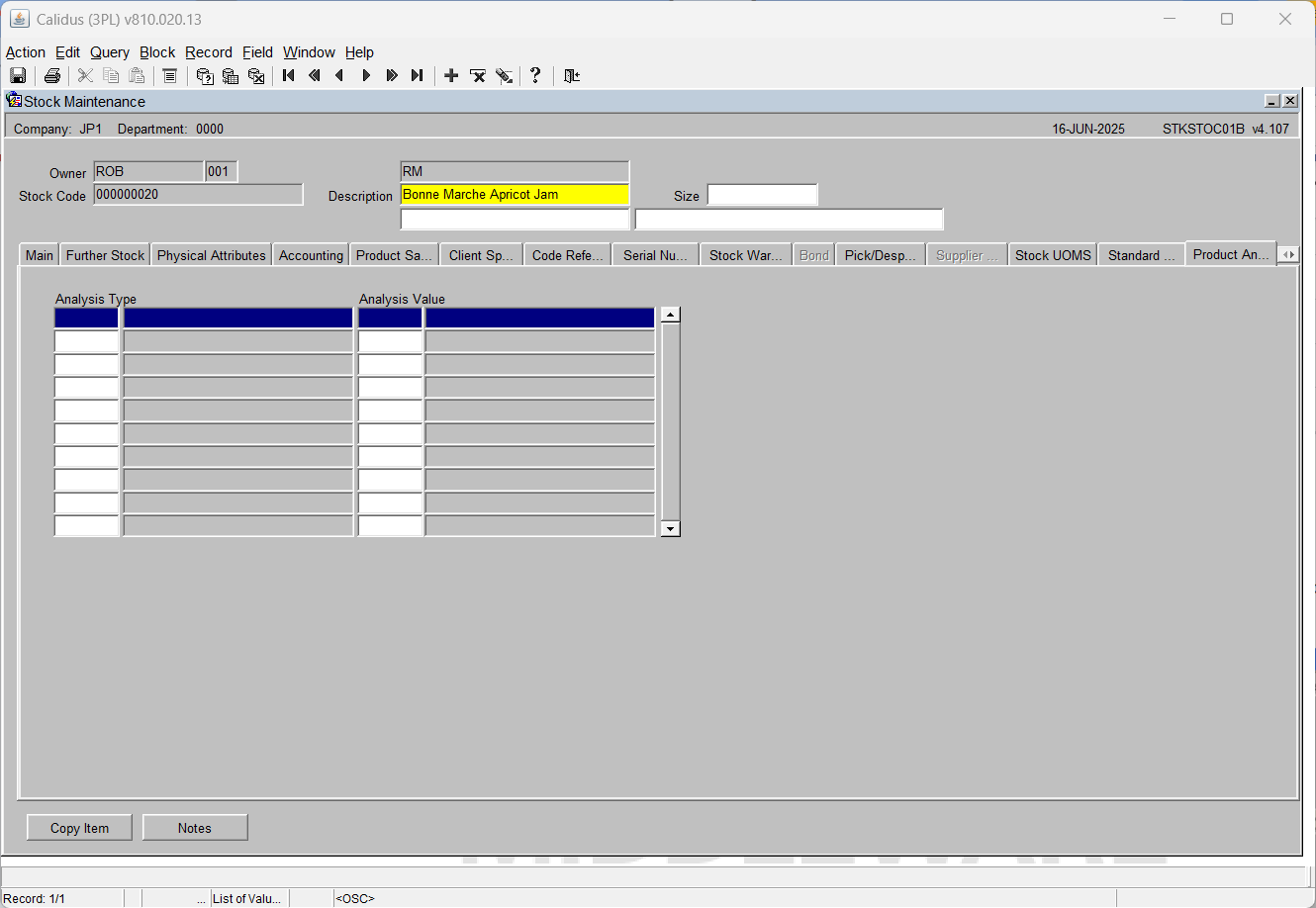
Stock Maintenance – Order UOS Tab
You are only allowed entry into this tab if you have the ‘Multi Order UOS’ box checked to Y in the Further Stock Tab. Facilitates ordering in multiple units of measure for conversion into case/unit quantities for allocation and picking.
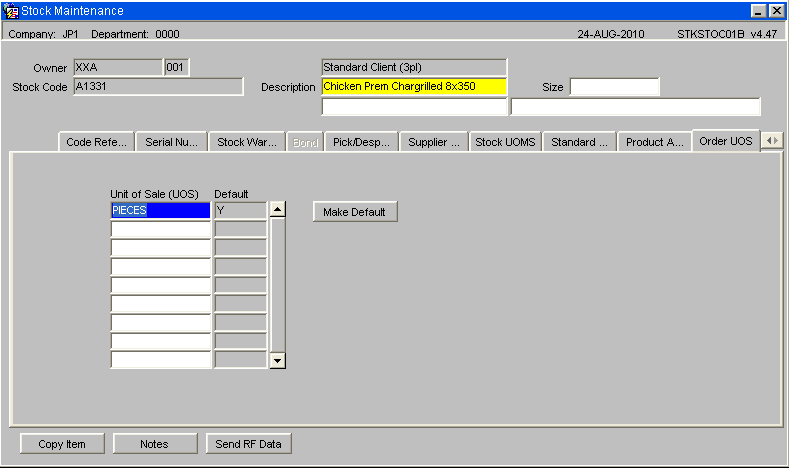
7. SUBSTITUTE STOCK MAINTENANCE
Allows the user to assign different product codes to this product in various priority order. If an order is raised for the main product and there is no stock, the system will automatically search for stock within its substitute products and if available, will allocate these instead of the main product.